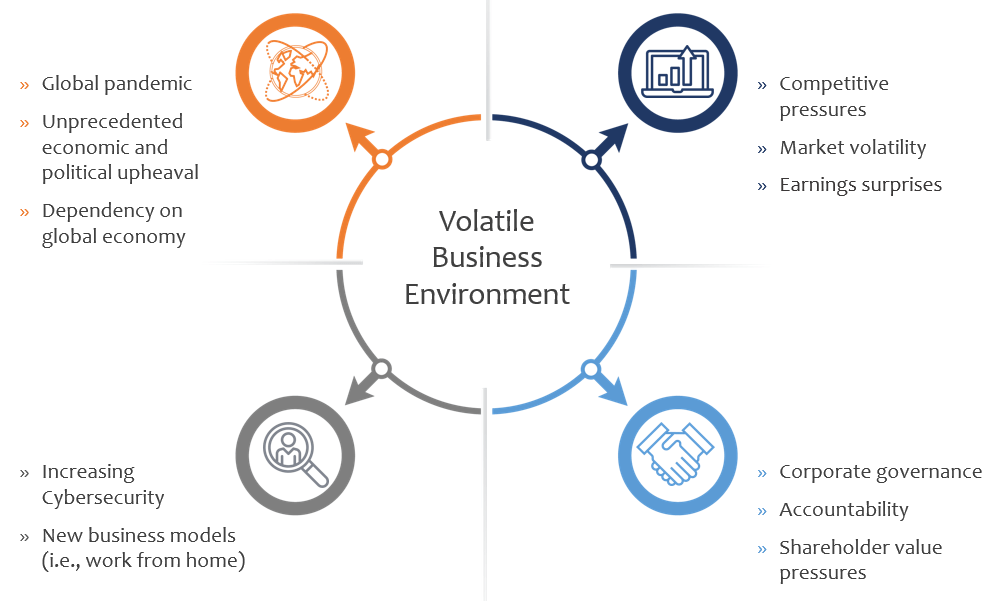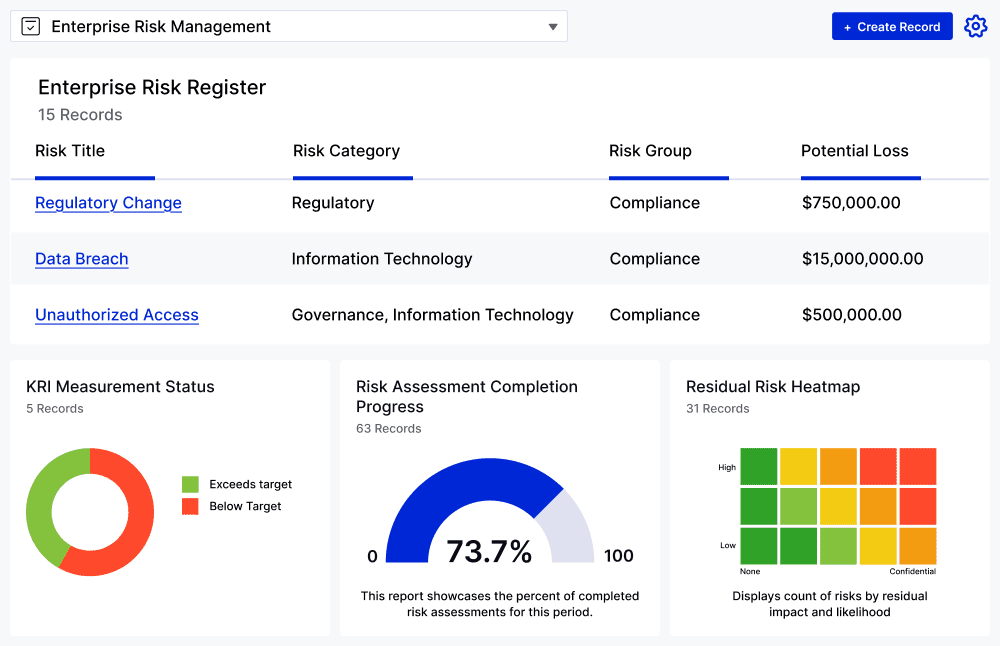Insider threats promote a proven way to reinforce security standards
Just How Ai-Driven Solutions Are Changing Expert Hazard Prevention and Compliance in the Workplace
In today's digital landscape, insider risks position considerable dangers to companies. AI-driven options are becoming essential devices in resolving these obstacles. By making use of innovative analytics and real-time surveillance, these modern technologies boost hazard discovery and simplify conformity monitoring. As business embrace these ingenious techniques, the transformation of workplace security becomes evident. The ramifications of this shift raise critical inquiries regarding the future of organizational safety and staff member personal privacy.
Understanding Expert Threats: The Expanding Danger in Modern Workplaces
As organizations significantly count on digital systems to take care of delicate information, the threat of insider threats has actually ended up being a pressing problem. Insider threats can develop from workers, professionals, or company companions who manipulate their access to sensitive information for malicious objectives. These risks are especially challenging to minimize because of the trust integral in employer-employee connections.
Inspirations for insider hazards range from economic gain and personal complaints to ideological beliefs. The repercussions of such violations can be serious, consisting of financial loss, reputational damages, and lawful consequences. Recognizing possible insider hazards is complicated by the subtle nature of their tasks, which frequently mix seamlessly with regular business procedures.
Organizations has to focus on extensive protection training and promote a culture of responsibility to battle these dangers. By recognizing the various kinds of expert threats and their motivations, business can much better prepare to implement effective preventative procedures and guard their sensitive information.

The Role of AI in Enhancing Danger Detection
AI plays a crucial role in boosting threat discovery via the application of anticipating analytics and behavioral pattern recognition. By assessing large quantities of information, AI systems can identify abnormalities that might show prospective expert risks. This positive approach allows companies to react promptly to risks before they rise.
Anticipating Analytics Implementation
While organizations progressively count on digital assets, the capacity for expert hazards remains a significant worry. Anticipating analytics execution plays a crucial function in addressing this problem by leveraging historic information to anticipate possible threats. Insider threats. By evaluating patterns and patterns, companies can recognize abnormalities that might show destructive intent or risky habits amongst employees. These advanced AI-driven systems utilize equipment understanding formulas to refine their predictive capabilities in time, adapting to new data inputs and developing risk landscapes. On top of that, the proactive nature of predictive analytics allows companies to take preemptive actions, therefore decreasing the threat of information violations or compliance violations. Ultimately, the assimilation of anticipating analytics boosts an organization's overall safety and security posture and supports an extra durable workplace environment
Behavior Pattern Acknowledgment
Comprehending and recognizing behavior patterns is crucial for boosting risk detection within companies. AI-driven options leverage progressed formulas to evaluate vast quantities of data, identifying uncommon habits indicative of possible insider threats. By continually keeping an eye on employee tasks, these systems can discover deviations from developed patterns, such as altered accessibility to sensitive details or irregular communication habits. This proactive strategy assists in early treatment, mitigating risks prior to they escalate into substantial safety violations. Furthermore, AI enhances the accuracy of hazard detection by decreasing incorrect positives, enabling security teams to focus on genuine worries. As organizations progressively take on AI technologies, the assimilation of behavioral pattern recognition will certainly play a critical function in reinforcing overall safety and conformity frameworks.
Proactive Compliance Monitoring Through AI Analytics
As organizations browse significantly complex regulative landscapes, aggressive conformity monitoring through AI analytics becomes an essential strategy. AI-driven services assist in the automation of conformity procedures, enabling organizations to determine and attend to possible threats prior to they escalate (Insider threats). By analyzing large volumes of data, these systems can discover patterns and anomalies that may suggest conformity violations or expert dangers
AI analytics enhance the effectiveness of compliance training programs by customizing web content to details staff member actions and threat aspects. This tailored strategy assurances that compliance training is both engaging and pertinent, cultivating a society of responsibility within the organization.
Furthermore, AI tools can streamline coverage and documents, minimizing the administrative concern on conformity teams. By providing real-time insights and predictive analytics, organizations can stay ahead of regulatory adjustments and preserve a robust conformity pose, eventually reducing the threat of expensive infractions and enhancing total work environment safety and security.
Real-Time Monitoring and Action Abilities
Effective conformity management establishes the foundation for durable safety steps, yet the dynamic nature of expert dangers necessitates real-time surveillance and reaction capabilities. Organizations are significantly leveraging AI-driven services to keep constant security of individual actions and system activities. This positive approach enables the immediate recognition of anomalies that might show prospective expert threats.
Real-time tracking systems utilize sophisticated formulas to analyze huge amounts of data, making it possible for organizations to find questionable tasks as they take place. When unusual patterns are recognized, automated notifies can activate instantaneous reactions, such as limiting access or starting examinations. This speedy action reduces prospective damages and guarantees that organizations can resolve threats quickly.
In addition, integrating these capabilities within compliance structures boosts general safety posture, lining up with governing demands while securing delicate info. Eventually, real-time tracking and reaction abilities are necessary for cultivating a safe and secure office setting in an age of advancing expert dangers.
Developing a Culture of Safety And Security Understanding
A strong culture of protection recognition is crucial for companies aiming to reduce insider threats effectively. This society promotes an atmosphere where employees understand the relevance of information safety and their role in protecting delicate details. Organizations can accomplish this by executing comprehensive training programs that educate team on identifying prospective threats and sticking to safety protocols.
Normal interaction about security plans, updates, and finest practices likewise strengthens the importance of caution. Encouraging open discussion regarding security worries empowers staff members to report suspicious tasks without worry of effects.
Additionally, companies should identify and reward positive habits pertaining to security, which can improve engagement. By integrating security awareness into daily regimens, business grow a workforce that focuses on protection, eventually lowering the possibility of expert threats. A dedicated technique to building this culture not only shields organizational assets however additionally contributes to compliance with regulative criteria.

Instance Studies: Successful Application of AI-Driven Solutions
The combination of AI-driven remedies in companies has shown to be a transformative approach to combating insider risks. One significant instance research entails a banks that executed an AI-based tracking system to examine worker habits. By making use of artificial intelligence formulas, the system spotted anomalies in data gain access to patterns, enabling the organization to identify potential insider hazards prior to any kind of substantial damages happened.
One more example is a technology firm that took on AI-driven analytics to boost its conformity efforts. This service enabled the company to automate the testimonial of data and communications sharing, making certain adherence to governing demands while lessening human error.
Both study highlight the effectiveness of AI in offering real-time insights and aggressive procedures against insider dangers, demonstrating that companies can considerably bolster their security pose with innovative modern technology. These applications not only shield delicate information yet likewise foster a society of compliance and alertness.
Future Patterns in Insider Danger Prevention and Conformity
As organizations significantly acknowledge the value of AI-driven options in reducing expert risks, focus is moving towards future patterns that will certainly shape avoidance techniques and conformity frameworks. One considerable trend is the combination of advanced maker learning algorithms with the ability of adapting to progressing threats in real-time. This versatility permits organizations to preemptively recognize risky habits prior to they escalate into safety incidents.
Furthermore, the focus on information privacy and honest AI usage is expected to grow, with structures arising to assure compliance with regulations like GDPR and CCPA. Organizations will likely embrace even more extensive training programs to enlighten employees about prospective threats, cultivating a proactive safety society.
The collaboration between AI tools and human insight will Look At This come to be vital, as crossbreed designs take advantage of the staminas of both innovation and human instinct. Generally, these fads will produce a much more durable landscape for expert danger avoidance and compliance, improving organizational safety in the digital age
Often Asked Concerns
How Do AI Solutions Integrate With Existing Security Systems?
AI solutions seamlessly incorporate with existing protection systems by assessing information from different sources, enhancing hazard detection capabilities, and improving case feedback. This combination enables organizations to strengthen their protection pose and improve compliance initiatives successfully.
What Industries Benefit Most From Ai-Driven Expert Risk Prevention?

Just How Can Workers Report Suspicious Actions Without Worry?
Employees can report dubious habits without fear by making use of anonymous coverage channels, making certain privacy, and cultivating a supportive workplace society that emphasizes safety and important site liability. This encourages open interaction and trust amongst all team participants.
What Are the Expenses Related To Applying AI Solutions?
The costs connected with executing AI remedies include software program licensing, infrastructure upgrades, continuous upkeep, staff training, and possible integration costs, which can differ considerably depending upon the company's size and certain needs of the technology.
Exactly How Often Should AI Solutions Be Upgraded for Performance?
AI systems ought to be upgraded regularly, ideally every few months, to assure performance. Continuous improvements in modern technology and evolving risks require these updates to preserve relevance and improve the system's capacity to protect against insider risks.
Efficient compliance administration establishes the structure for durable security measures, but the dynamic nature of insider risks requires real-time tracking and action capacities. A solid society of protection recognition is essential for organizations aiming to mitigate expert threats effectively. By integrating security awareness right into day-to-day regimens, business cultivate a workforce that prioritizes security, ultimately reducing the chance of expert dangers. Both situation research studies show the efficacy of AI in providing real-time understandings and aggressive procedures against insider threats, showing that organizations can significantly reinforce their safety and security posture via next cutting-edge modern technology. As organizations increasingly identify the worth of AI-driven options in alleviating insider hazards, interest is shifting towards future patterns that will form prevention strategies and conformity frameworks.